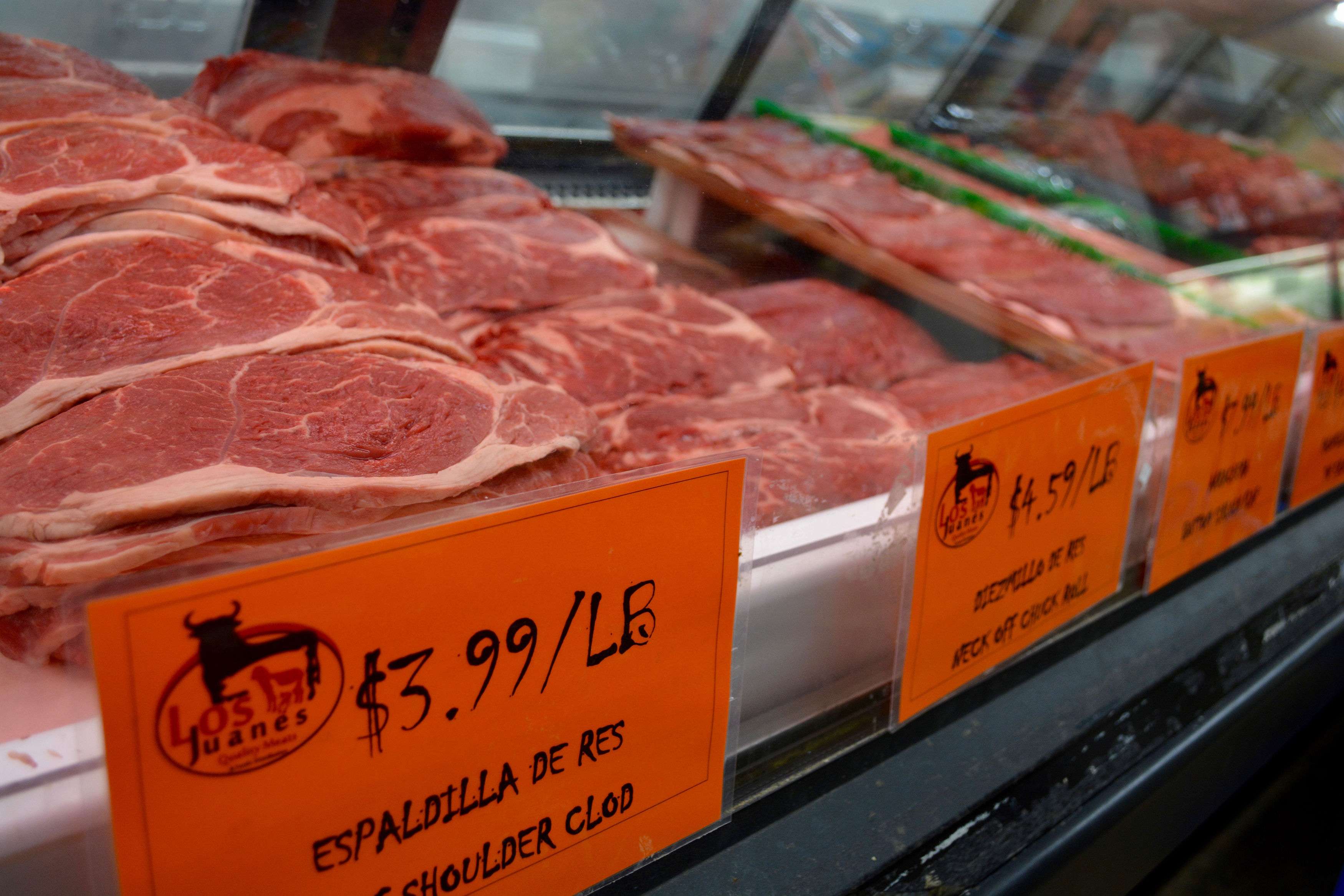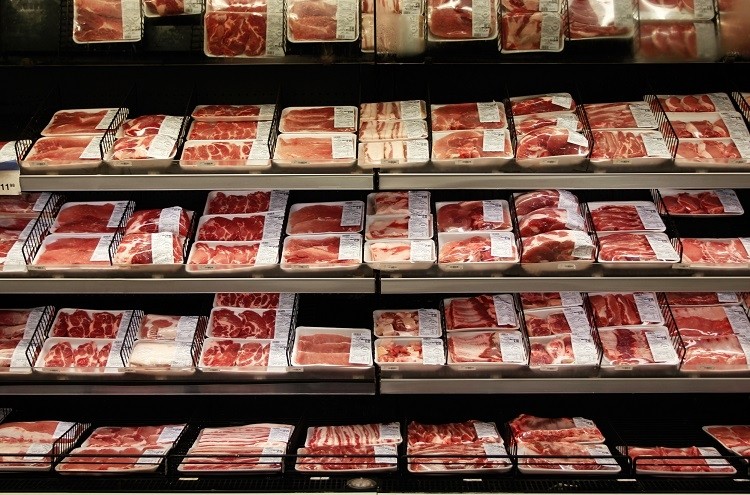What Makes Bagley Farms Meat Market Edwardsville IL Attract Attention for Meat Lovers
What Makes Bagley Farms Meat Market Edwardsville IL Attract Attention for Meat Lovers
Blog Article
Uncover the Art of the Butcher's Cut in a Modern Meat Market
In the ever-evolving landscape of contemporary meat markets, the butcher's cut has actually transcended its typical roots, combining old-time craftsmanship with contemporary methods. Today's butchers are not just processors of meat; they are well-informed artisans who stress sustainability and moral sourcing. Their proficiency in picking and preparing cuts tailored to specific culinary requirements offers an unequaled eating experience. What absolutely establishes the contemporary butcher apart is their capability to forge a much deeper connection in between consumers and the beginnings of their meat. Just how do these masters balance tradition with innovation, and what implications does this have for the future of meat usage?
Advancement of Butchery Methods
The evolution of butchery strategies mirrors a rich tapestry of advancement and adjustment driven by improvements in technology, modifications in customer demand, and a much deeper understanding of meat scientific research. Historically, butchery was a craft gave with generations, with techniques honed over centuries to make the most of yield and taste. The commercial change ushered in automation, changing standard methods and allowing massive processing.
The mid-20th century saw butchery techniques further improved by clinical understandings into muscular tissue biology and meat aging, improving both tenderness and preference. Advancements like vacuum packaging and refrigeration extended item shelf-life, permitting butchers to branch out offerings and improve top quality control. This duration additionally noted the surge of specialized equipment, such as band saws and meat slicers, which boosted precision and performance in meat handling.

The 21st century has actually presented electronic innovation into the butchery realm. Computerized systems currently aid in tracking animal provenance and enhancing cuts to satisfy certain customer preferences. Additionally, a revival in artisanal butchery has arised, mixing typical abilities with modern understanding to satisfy customers seeking honest and sustainable meat choices. This development emphasizes a dynamic interaction between custom and technology, meeting contemporary needs while preserving the craft's heritage.
Comprehending Meat Cuts
Understanding the complexities of meat cuts is necessary for both butchers and customers seeking high quality and value. Each cut originates from a different component of the pet, passing on special flavors, appearances, and cooking techniques - bagley farms meat market edwardsville il. Mastery of these distinctions not only improves cooking experiences yet additionally makes the most of the energy of each carcass. For butchers, exact cuts show skill and respect for the craft, making sure minimal waste and optimal yield.

Understanding muscle make-up is crucial; muscle mass utilized extra frequently by the animal tend to be harder and are best fit for sluggish food preparation techniques, while less-used muscles, like those found in the loin, are extra tender and perfect for cooking or roasting. Familiarity with these differences empowers consumers to make informed choices, improving their culinary undertakings.
Picking High Quality Meat
Selecting the right meat includes more than simply selecting a visually appealing piece from the display. bagley farms meat market edwardsville il. The art of selecting high quality meat needs a critical eye and understanding of specific attributes that represent freshness and excellence. Pay interest to the color; beef needs to have a brilliant, cherry-red color, while lamb ought to exhibit a soft pink tone, and try this web-site pork a pale pink. This shows the meat is fresh and hasn't been revealed to oxygen for too long.
Second of all, take into consideration the marbling, which describes the white flecks of fat within the muscle. Correct marbling is an essential indication of tenderness and flavor, as it melts during cooking, enhancing the meat's juiciness. Keep in mind, greater marbling commonly associates with premium top quality cuts, such as USDA Prime.
Appearance is one more essential aspect; meat needs to really feel solid to the touch, not slimy or excessively soft. Furthermore, be mindful of the scent. Fresh meat needs to have a clean, neutral odor, free from any kind of sour or off-putting smells.
Coupling Cuts With Cooking Methods

Alternatively, harder cuts like brisket and chuck roast are abundant in collagen, which damages down right into jelly when prepared gradually. These cuts are excellent for braising or slow roasting, allowing the meat to soften over time and develop deep, Read Full Article intricate flavors. Likewise, cuts such as brief ribs and pork shoulder make out well with slow-cooking methods, where extended cooking times transform their robust appearances right into succulent dishes.
Lamb shanks and oxtail, which need extended food preparation to soften, are excellent candidates for cooking or slow-moving simmering. These methods coax out abundant, hearty flavors while maintaining wetness. By understanding the special characteristics of each cut, cooks and home chefs alike can boost their culinary creations, ensuring each meal is both satisfying and unforgettable.
The Butcher's Function Today
Browsing the progressing landscape of the contemporary meat market, the butcher's function today extends beyond mere preparation of cuts. Contemporary butchers are culinary artisans, instructors, and supporters for sustainable methods. They connect the space in between the ranch and the fork by guaranteeing moral sourcing, understanding animal husbandry, and focusing on openness in the supply chain. This shift shows the growing consumer demand for quality over amount, where provenance and pet welfare are paramount.
In addition to crafting precise cuts, butchers currently engage straight with customers, providing cooking guidance and customizing choices to match specific demands and preferences. Their proficiency in meat aging, marbling, and taste accounts empowers consumers to make enlightened decisions, boosting their cooking experiences. This tailored solution exhibits the butcher's evolving function as a trusted expert in the kitchen area.
Additionally, butchers are critical in decreasing waste, making click here to find out more use of whole pets to create varied items such as sausages and stocks. This comprehensive approach not just appreciates the pet but likewise lines up with contemporary sustainability goals. By doing this, the modern-day butcher personifies both tradition and innovation, adjusting to an ever-changing market while preserving the creativity and integrity of their craft.
Final Thought
Mastery in recognizing diverse meat cuts and top quality indications empowers butchers to offer informed referrals, straightening certain cuts with ideal food preparation techniques. By recognizing historic practices while embracing modern demands, the butcher's function stays crucial in today's innovative meat market.
Report this page